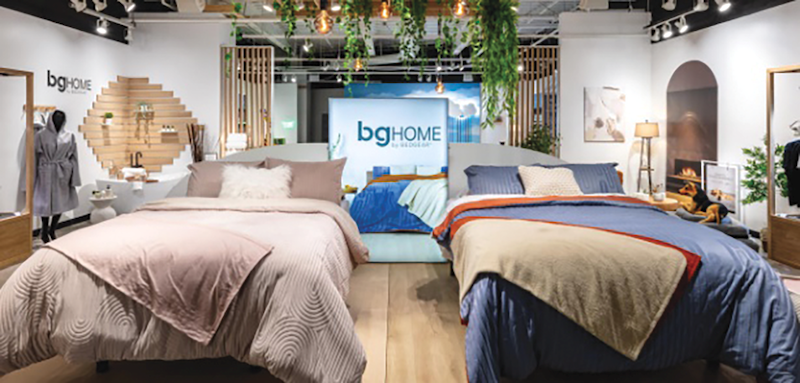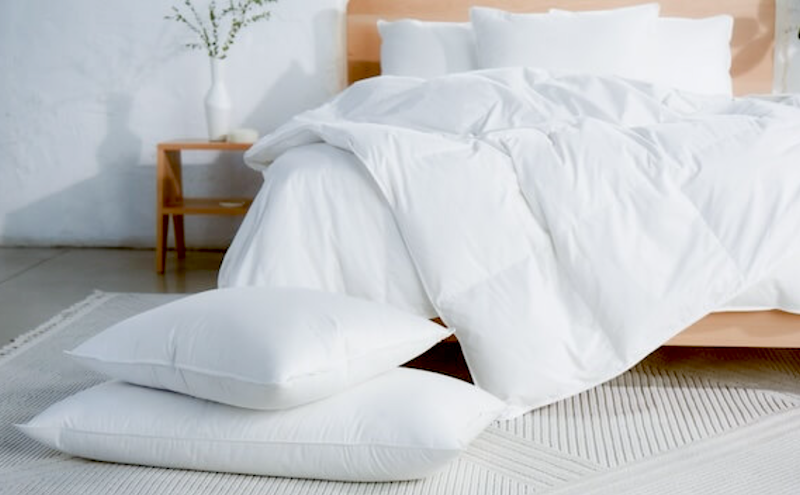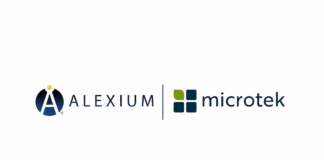Carrying a nice selection of bed linens, mattress toppers and protectors makes shopping easy for consumers — and builds tickets for retailers.

With bedding sales still in a slump,retailersneed ways they can build tickets, including selling more sleep accessories.
“Store traffic remains low, and that puts more pressure on the RSA to make the most of each customer visit,” says John Schulte, president of St. Peters, Missouri-based Innovative Sleep Technologies, maker of the Symphony Sleep brand. “Our bedding accessories and essentials, along with our marketing programs, are developed to enhance and maximize each customer ticket.”
There’s nothing wrong with encouraging purchases beyond the mattress — if (and it’s a big if) you offer shoppers accessories that will help them build a comfy, inviting sleep ensemble that makes them eager to get into bed each night. Selling extra items just to boost sales doesn’t help you in the long run: It can make shoppers feel like you’ve taken advantage of them.
However, offering customers feature-filled linens, toppers, protectors and other items that will enhance their mattress purchase is a real service — and one that mattress retailers should provide.
Accessories vendors like Innovative Sleep Technologies, Bedgear and others continue to add benefits that will entice shoppers to stock up on top-of-bed items.
Bedgear is rolling out the BG Home collection, a new line of fashion-forward sleep accessories and other home comfort items that are “driven by the belief that performance extends beyond the mattress,” says Jonah Nelson, director of brand experience for the Farmingdale, New York-based bedding company.
The comprehensive BG Home line is designed to offer “an opportunity for our current retail partners to provide customers with a more comprehensive performance bedding system,” Nelson says. “It’s designed to strengthen the value for our customers by offering access to products likely chosen during mattress upgrades. … By offering a selection that resonates with consumer preferences at the critical moment of a mattress upgrade, we not only enrich the customer experience but also secure a competitive advantage.”
BG Home includes duvet cover sets, comforters, throw blankets and pajamas, among other items. “Bedgear believes that every component of the sleep system, including sheets and comforters traditionally viewed as mere style elements, should be working with you to optimize sleep,” Nelson adds. “These (new) products blend aesthetics with functionality, offering ultra-soft, moisture-wicking and breathable fabrics to ensure you get a comfortable sleep experience through your entire bedding ensemble.”
To help you augment or refresh your current selection of sleep accessories, we’ll look at some new products that are illustrative of key trends and offer tips for selling and merchandising them.
Craft the Perfect Sleep Ensemble: Matching Accessories to Mattresses

Scientists say that, despite what we might believe, people can’t multitask. When we think we are, we’re actually just switching back and forth between activities.
But sleep accessories don’t have such constraints, and manufacturers continue to pack their multitasking products with even more features, including those that mirror the trendy components found in today’s mattresses.
When helping shoppers choose linens and other items for their new mattress, it makes sense to suggest products that enhance the features of that bed, such as cooling or sustainability. Ideally, you help them layer products with those features to create an entire bedding ensemble.
Cooling Comfort: Sleep Accessories that Beat the Heat
Cooling is a key feature of many mattresses and there are plenty of accessories that provide moisture wicking, phase-change materials and other technologies that keep sleepers comfortable throughout the night.
One new offering is the Snö line of mattress and pillow protectors, as well as pillows, from Innofa USA.

“We’ve made the powerhouse of cooling by combining PE yarns … with a dual-sided, specially developed PCM that prevents the ‘slippy-ness’ of the PE yarns and gives that extra cooling capacity,” says John Cleyman, CEO of the Eden, North Carolina-based company, which specializes in mattress fabrics and covers. An added layer of graphite on the back of the fabric provides more heat wicking.
In March, Sinomax USA Inc., which offers foam sleep products, including mattresses, pillows and toppers, unveiled a new temperature-regulating technology. “By harnessing the hyper-conductive thermal properties of carbon, PermaCHILL adaptive temperature technology cools you when hot and warms you when cold,” the Houston-based company says. PermaCHILL is naturally derived and odor-free, and is intended to last for the life of the product. Sinomax pairs it with surface treatments for reinforced, layered cooling.
Sinomax’s sleep products are sold in more than 10,000 stores under proprietary and private labels. And Bedgear’s new BG Home line includes duvet sets that complement its comforters with proprietary Climacore technology that Nelson says is “meticulously engineered to ensure our comforters maintain a cozy warmth without the discomfort of heat entrapment.”
Going Green in the Bedroom: Sustainable Sleep Accessories for an Eco-Friendly Choice
A lot of consumers like the idea of buying sustainable products — and especially natural materials for sleep accessories that will be close to their skin.
“People are starting to be more conscious about the products they use, so it is our responsibility to do the same,” says Rachel Gomez, vice president of marketing for DreamFit.

Earlier this year, the Cullman, Alabama-based company debuted two sheet sets under its DreamHealth collection: a 100% organic cotton set that retails for $199 and the Bamboo Stretch Knit, a bamboo viscose set that retails for $229. They are available in natural hues such as white, blue and ivory.
Down has long been a popular natural component in pillows and duvets, and Avocado Green Mattress recently launched a new down bedding collection. The duvets include a lightweight and all-season weight, both with 400-thread-count cotton sateen covers. A baffle-box construction keeps the down evenly distributed and prevents cold spots.
Adding to the sustainability story is the fact that the products are made with Responsible Down Standard-certified down. The collection also has Oeko-Tex Standard 100 and Downmark certifications.
Sinomax says it integrates sustainability features — from biodegradable packaging to sustainable fabrics and foams — into all of the products in its Ecossentials line, which is also available as private label to retailers. In the spring, Sinomax unveiled an “advanced, pressure-activated cooling gel, made from 94% bio-based materials,” in its foam sleep products, including toppers. It’s certified by CertiPUR-US, Oeko-Tex and the USDA BioPreferred program.
Boost Sales Now! Actionable Tips for Selling Sleep Accessories
Be upfront
Display a portion of your sleep accessories near the front door — and make sure selections in other parts of the store are easy to see. In other words, don’t hide accessories in the back by the bathrooms.
If you have the space, dress a floor model or two with protectors, sheets, pillows and duvets, perhaps different types on each side of the bed. Pull them back neatly on a corner to reveal the layers.
On your e-commerce site, highlight accessories on homepages and in slideshow displays.
Listen to the shopper
Work accessories into the sales conversation all along the way. When shoppers mention allergies, it is a prime time to talk about mattress encasements that keep dust mites and other allergens trapped inside and away from the sleeper. If a shopper is interested in organic mattresses, bring over samples of your organic sheets for them to feel.
Use prompts on your e-commerce site to do the same thing: Once a shopper places a cooling mattress in their shopping cart (or when they start narrowing their options), let them know about your selection of cooling mattress protectors and sheets.
Hone your strategy
A full accessories program should include mattress and pillow protectors, mattress toppers and sheets in good-better-best options. If you want to expand beyond that, add blankets and duvets. A true accessories specialist might also offer aromatherapy sleep sprays, eye masks, even pajamas and robes, and technology like sound machines and health monitors. Look for a vendor (or two or three, depending on the size of your store) that offers a full array of accessories to make your own buying and product presentation easier.
Simplify your presentation
A full array is important to offer but don’t overwhelm your customers with options. For example, if you carry toppers, consider two or three constructions (memory foam, latex and/or down) in firm and plush versions. Similarly, for mattress and pillow protectors, consider a basic option, a cooling option and a luxury option.
Promote the category
If you want to increase your accessories sales, you need to tout your products and not just hope retail sales associates will sell more. Devote a percentage of your marketing budget to accessories — or bump up the percentage you already devote to the category. If you want 20% of your sales to come from accessories, you should devote 20% of your marketing budget and sales to the category.
Get more selling tips & strategies from Sleep Savvy magazine: 5 Must-Know Design Trends to Transform Your Brick-and-Mortar Location







